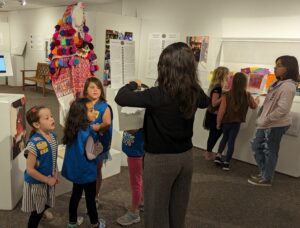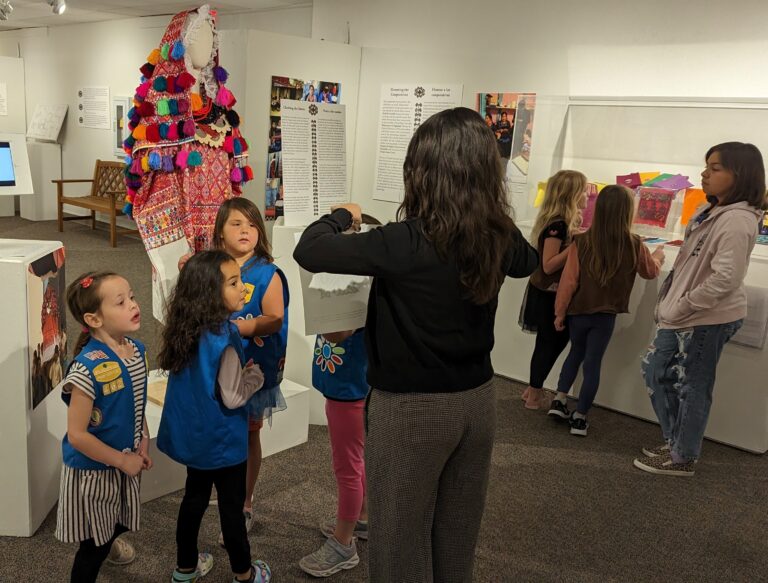A reflection on our work with Maya weavers during the Coronavirus Pandemic
By Christine Eber
Since we postponed face-to-face sales of weavings from Maya cooperatives in Chiapas in March, we have been selling their work through remote means and occasionally to someone in our Las Cruces community by leaving a package on their patio.
During the first week of this new selling experience I thought I had contracted the Coronavirus. While I was waiting for my test results (they came back negative) other members of our Steering Committee took over filling Instagram orders.
Initially, to pass this task on to others I left things they needed near their front doors or on their patios. On one occasion when I dropped some mailing envelopes off to Susan Beck she followed up with an email saying that our exchange reminded her of how the people of a village North of London survived the plague in 1665.
The Rector came up with a plan to save the village by asking the people to seal themselves off from the outside world. In return, he saw that they were provisioned through the aid of an Earl living some miles distant. The plan was for food, fuel, and medicines to be brought by cart and left at a Boundary Stone at the edge of the village. Anyone wishing to purchase other items could leave coins in holes carved into the rock and filled with vinegar.
This true story is told in Year of Wonders, a novel by Geraldine Brooks. Both Susan and I read and loved this book. After Susan reminded me of the boundary stone I came to see it as a metaphor for how Weaving for Justice has been trying to help the weavers in Chiapas make it through this pandemic.
For example, each time I open up our Instagram page I think of it as a Boundary Stone. There Meghann Dallin, a Steering Committee member, virtually leaves beautiful textiles. While not essential items like flour and salt, when sold these textiles are transformed into cash that goes directly to the weavers to purchase corn and other necessities.
I have also come to see friends’ patios and gardens as Boundary Stones. There I’ve left bags of huipiles (blouses) for them to take into their homes, where they model them while a family member takes their photo. Afterwards, they put the bag back on the patio for me to pick up. Photos of these friends in huipiles from Chiapas grace our Instagram and Facebook pages.
On behalf of the Weaving for Justice Steering Committee: Thank you to everyone who has given of their time, money, and good wishes to help the weavers with whom we work to live with dignity and safety during this difficult and strange time.










